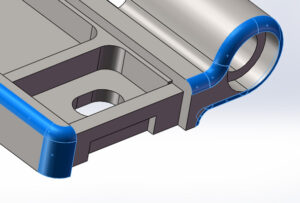When it comes to customizing stainless steel hinges for your metal enclosures, attention to detail is crucial. Hinges play a vital role in the functionality and security of your enclosures, and tailoring them to your specific needs can enhance their performance and longevity.
Customizing stainless steel hinges for your metal enclosures involves defining specifications, selecting the right stainless steel grade, choosing hinge types, considering load capacity, adhering to safety requirements, determining quantity and delivery time, managing budget constraints, providing samples or drawings, upholding quality standards, and submitting a detailed request for quotation.
Read on and I’ll give you more details in the following 10 areas:
Specifications and Requirements
Before diving into the customization process, it’s essential to establish clear specifications and requirements for your stainless steel hinges. Start by defining the size, shape, and weight of your metal enclosures. Consider factors such as door dimensions and the degree of rotation required for the hinges. Additionally, identify any specific environmental conditions the enclosures will be subjected to, such as exposure to extreme temperatures, moisture, or corrosive substances.
Furthermore, outline your aesthetic preferences and desired finish for the hinges, as these details can impact the overall look of your enclosures. By having a comprehensive list of specifications and requirements, you’ll have a solid foundation for the customization process.

Material Selection
Selecting the right material for your stainless steel hinges is a critical decision. Stainless steel is a popular choice due to its corrosion resistance and durability, making it ideal for metal enclosures that may be exposed to harsh environments. However, there are different grades of stainless steel, each with varying levels of corrosion resistance and strength. Consider the specific conditions your enclosures will face to determine the most suitable stainless steel grade.
In some cases, you may opt for additional coatings or treatments to enhance the material’s performance further. These could include powder coating, electropolishing, or passivation, depending on your corrosion and aesthetic requirements.
Hinge Types
Stainless steel hinges come in various types, and choosing the right one depends on the intended application and design of your metal enclosures. Common hinge types include butt hinges, continuous hinges (piano hinges), pivot hinges, and concealed hinges. Each type offers different advantages in terms of load-bearing capacity, range of motion, and aesthetics.
Consider the space available for hinge installation and how the hinge type will affect the enclosure’s overall functionality. Additionally, take into account whether you need features like removable pins or security enhancements, such as tamper-resistant hinges.

Load Capacity
The load capacity of your stainless steel hinges is a crucial factor to ensure the long-term performance of your metal enclosures. Calculate the weight of the enclosure’s door or lid, including any additional components, and choose hinges that can comfortably support that weight. It’s advisable to select hinges with a higher load capacity than strictly required to provide a safety margin and extend the hinge’s lifespan.
Safety Requirements
Depending on your industry or application, there may be specific safety requirements that your hinges must meet. For example, enclosures used in healthcare or food processing may require hinges that are easy to clean and resistant to bacterial growth. In contrast, enclosures in the aerospace or defense sectors may need hinges that meet stringent safety and security standards.
Ensure that your chosen stainless steel hinges comply with any applicable regulations and standards to avoid potential issues down the line.

Quantity and Delivery Time
Determine the quantity of stainless steel hinges you need for your project and establish a realistic timeline for delivery. Custom hinges may have longer lead times, so plan accordingly to avoid delays in your enclosure manufacturing process. Communicate your quantity and delivery time requirements clearly with your hinge supplier to ensure a smooth workflow.
Budget Considerations
Balancing your budget is an essential aspect of customizing stainless steel hinges. While quality and performance are crucial, it’s also important to stay within your project’s financial constraints. Request price quotes from multiple suppliers and compare them based on factors like material quality, customization options, and added features. This will help you find the best value for your investment.
Samples or Drawings
To ensure the hinges meet your exact specifications, consider requesting samples or providing detailed drawings to your hinge supplier. Samples allow you to physically assess the hinge’s fit and functionality, while drawings provide precise dimensions and design specifications. Clear communication with your supplier in this regard is vital to avoid any discrepancies in the final product.

Quality Standards
When customizing stainless steel hinges, it’s imperative to uphold strict quality standards. Ensure that your chosen supplier adheres to industry-recognized quality assurance practices. This includes material testing, manufacturing process control, and quality inspections at various stages of production. Reliable suppliers often have certifications such as ISO 9001 to demonstrate their commitment to quality.
Request for Quotation
Finally, once you’ve gathered all the necessary information and requirements, send a detailed request for quotation (RFQ) to your selected hinge supplier. Your RFQ should include specifications, quantities, delivery schedules, and any other relevant details. Be prepared to engage in a dialogue with potential suppliers to address any questions or concerns they may have regarding your customization needs.
conclusion
Customizing stainless steel hinges for your metal enclosures is a meticulous process that requires careful consideration of various factors, from specifications and material selection to safety requirements and budget constraints. By following these steps and collaborating closely with a reputable hinge supplier, you can ensure that your metal enclosures are equipped with hinges that meet your exact needs and deliver exceptional performance.
You might also be interested:




